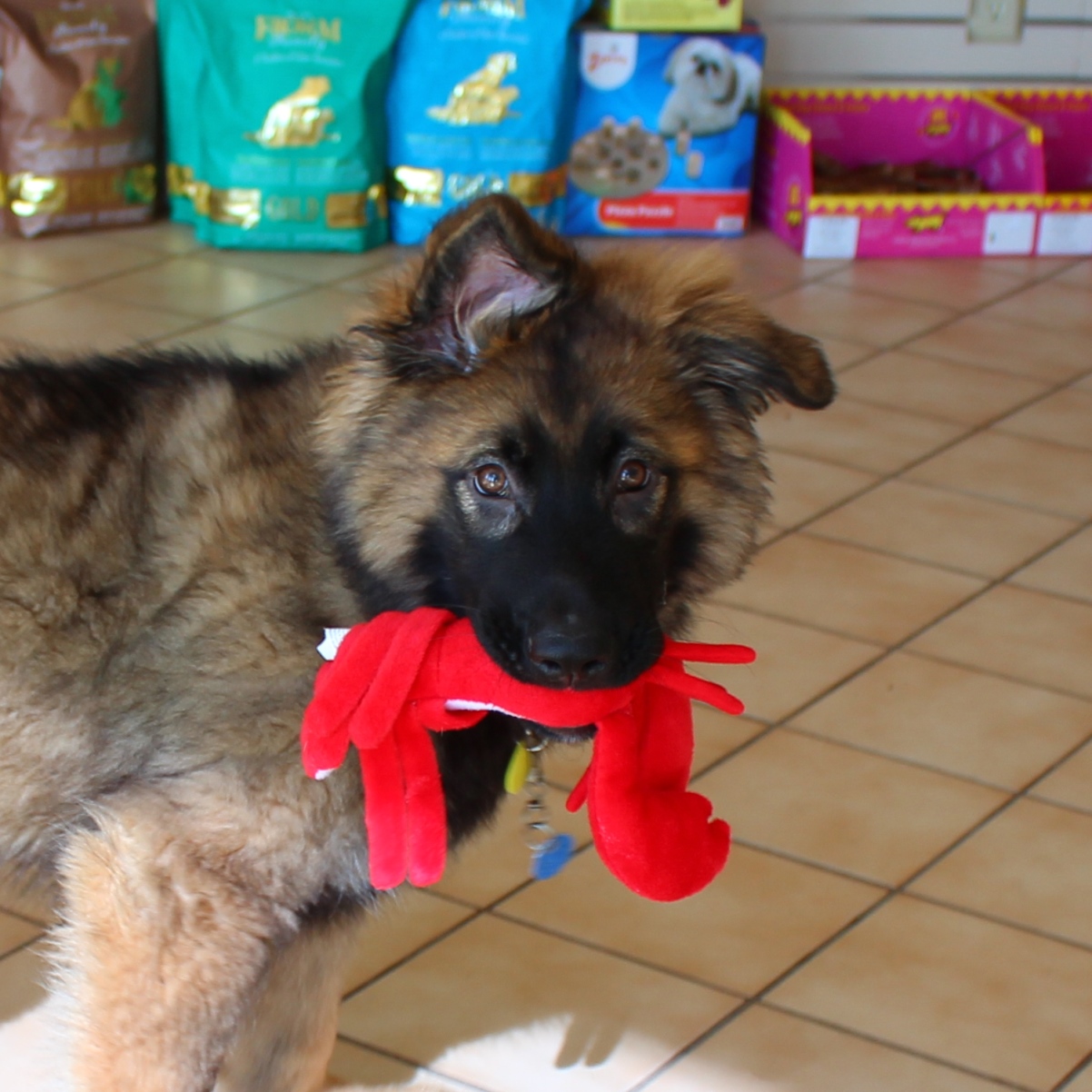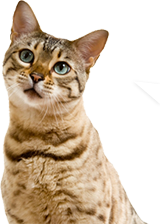Preventing Unwanted Chewing
 Chewing is a natural behavior for dogs and is beneficial for their health. It helps keep their jaw strong and teeth clean, it can relieve anxiety or ease stress, and it can stave off boredom if they’re not receiving enough mental and physical exercise each day. However, when directed toward household items, chewing becomes undesirable and potentially unsafe. Rather than attempting to stop your dog from chewing anything, it’s important to support this healthy habit by redirecting them to appropriate items. By managing the environment and providing your dog with appropriate outlets for chewing, you can reduce the destruction and hazardous situations in your home.
Chewing is a natural behavior for dogs and is beneficial for their health. It helps keep their jaw strong and teeth clean, it can relieve anxiety or ease stress, and it can stave off boredom if they’re not receiving enough mental and physical exercise each day. However, when directed toward household items, chewing becomes undesirable and potentially unsafe. Rather than attempting to stop your dog from chewing anything, it’s important to support this healthy habit by redirecting them to appropriate items. By managing the environment and providing your dog with appropriate outlets for chewing, you can reduce the destruction and hazardous situations in your home.
Important note: Always be sure to supervise your dog to ensure their safety while they are chewing, and consult your veterinarian for the safest products to purchase for your dog based on their size, health history, and chewing habits.
Management
The first step in reducing destructive chewing is to manage the environment in order to set your dog up for success. While your dog is learning what items are okay to chew on, ensure they don’t have access to anything they shouldn’t have in their mouth.
Clean Up | Many dogs find shoes, kids’ toys, throw pillows, remotes, and other items that are left lying around to be great chew toys. Be diligent about putting these items away and not allowing your dog access to them. In time, once your dog has learned what is appropriate to chew on, you may be able to leave some of these items out, but while they’re learning, diligence on your part is crucial. Make sure the entire family is on board and picking up all loose items.
Supervision | It’s important to supervise your dog while they’re chewing, whether they’re a puppy or an adult. If you are watching and paying close attention to what the dog is doing, you will be able to interrupt them before they begin chewing on inappropriate items and give them something better to chew.
Gates/barriers | Using strategically placed barriers (such as baby gates) to limit your dog’s access to parts of your home can be a great way to assist in sustained supervision of your dog. You may also be able to simply close doors if your home is set up for it. If your pup is always in your line of sight and unable to sneak off in search of things to chew, they aren’t given the chance to practice unwanted chewing in the first place. This will also allow you to block off parts of your home where you aren’t able to keep chewable items out of reach or picked up (ex. a child’s playroom or a mud room where shoes are kept). Many dogs are able to jump a standard baby gate, so you may want to purchase a taller gate right off the bat so they aren’t tempted to leap over it.
Crate Training | There will be times when you are unable to supervise your dog, and this is where a crate comes in handy. You can place your dog in their crate to eliminate the opportunity for them to chew on inappropriate items, especially when you’re not home. It is important for the crate to be a positive place for your dog and you should always give them something to do while they are inside of it. This should be an enrichment item that will occupy your pup for an extended period of time, such as a frozen Kong or puzzle toy. See our crate training resource for more on how to successfully crate train your dog.
Deterrents | If there are items in your home that your dog enjoys chewing and they are not able to be put away or completely blocked off (ex. baseboards, furniture legs, etc.), use deterrents to make them less appealing. Spray items with Bitter Apple or Bitter Cherry spray to reduce how much enjoyment your dog gets when chewing it. When using bitter spray, it is necessary to re-apply frequently as the bitterness wears off. Do NOT spray the Bitter Apple directly into your dog’s mouth. You can also utilize double-sided tape on furniture legs to create an off-putting sensation. Just be sure to remove the tape immediately if your dog is not deterred and attempts to ingest it.
While management is an important step to reducing your dog’s chewing on undesirable items, it is equally important to implement strategies that teach your dog to chew appropriate items. In the long term, this reduces the need to utilize all the management techniques listed above and creates healthier, safer habits. Some dogs will, however, need some level of management throughout their lives.
Trade Game
There may be times when your management fails and your dog picks up an item to chew that is unsafe for them to consume or something you do not want damaged. When you need your dog to immediately remove an item from their mouth, it’s best to play the “trade game,” offering them something even more desirable so they let go of what they currently have and go off to pursue to the new item. If you were to just walk up and yank something from their mouth, it can quickly become a game to them, causing them to run off and avoid you anytime they have something of value. It can also become dangerous, as they can begin to feel threatened and start guarding resources, leading them to growl or even attempt to bite if approached when they’re in possession of a high-value item. To reduce the stress on your dog and prevent resource guarding, always trade for items. See our Trade Game resource and video for details on how to do this safely.
Reducing Destructive Chewing
Provide Appropriate Chews | There are endless varieties of dog-safe chews available. Knowing what your dog’s texture preference is for chewing will help you to pick out an appropriate item that will keep their interest. For example, if your dog enjoys chewing wood furniture, purchase dog-safe wood chews (ex. Gorilla Chews) to match the mouth feel. Some dogs enjoy destroying pillows, socks, or other fabric items. If this is the case, try acquiring plush toys for them to tear apart, then be sure to clean up any loose stuffing and scraps so they aren’t ingested. There are also many toys specifically designed for heavy chewers which are made of more durable materials or are meant to come apart in pet-safe pieces so they can be reassembled for continuous play. You may have to purchase a variety of items at first to see what your dog’s preference is. Make sure these chews are easy to access when you’re home. If you find they enjoy multiple types of chews, rotate them every few days to keep them novel and exciting. No matter what you provide, be sure to keep a close eye on them while they are chewing and remove the item when you are no longer able to supervise them.
Increase Enrichment | Much like our human tendency to snack when we’re bored or stressed, many dogs chew for the same reasons. By providing your dog with both mental and physical exercise daily, they will be appropriately stimulated and less likely to chew on your household items because they are tired and ready for a nap instead of looking for more stimulation. See our Dog Enrichment resource for more information on ways to provide your dog with mental and physical exercise.
REMINDER: Always be sure to supervise your dog when they are chewing. It’s important to know what they’re chewing on and the state of the item, as products can splinter or get lodged in their mouths once chewed down to a small enough size. If you aren’t sure what product is safest for your dog, consult your veterinarian for recommendations based on their size, health history, and chewing tendencies.
Although your dog’s chewing may feel intentionally bothersome and create feelings of frustration towards them, your dog is not out to cause you stress. Never punish your dog for chewing, even if they’re caught in the act. They are simply following a natural instinct and it is our job to help them direct that behavior towards appropriate items. If they happen to chew on an undesirable item, play the trade game and use the experience as a learning opportunity to identify what piqued their interest, how you can prevent it in the future, and what appropriate item would best keep them entertained moving forward. You’re both learning together and will make great progress with some persistence and patience!
